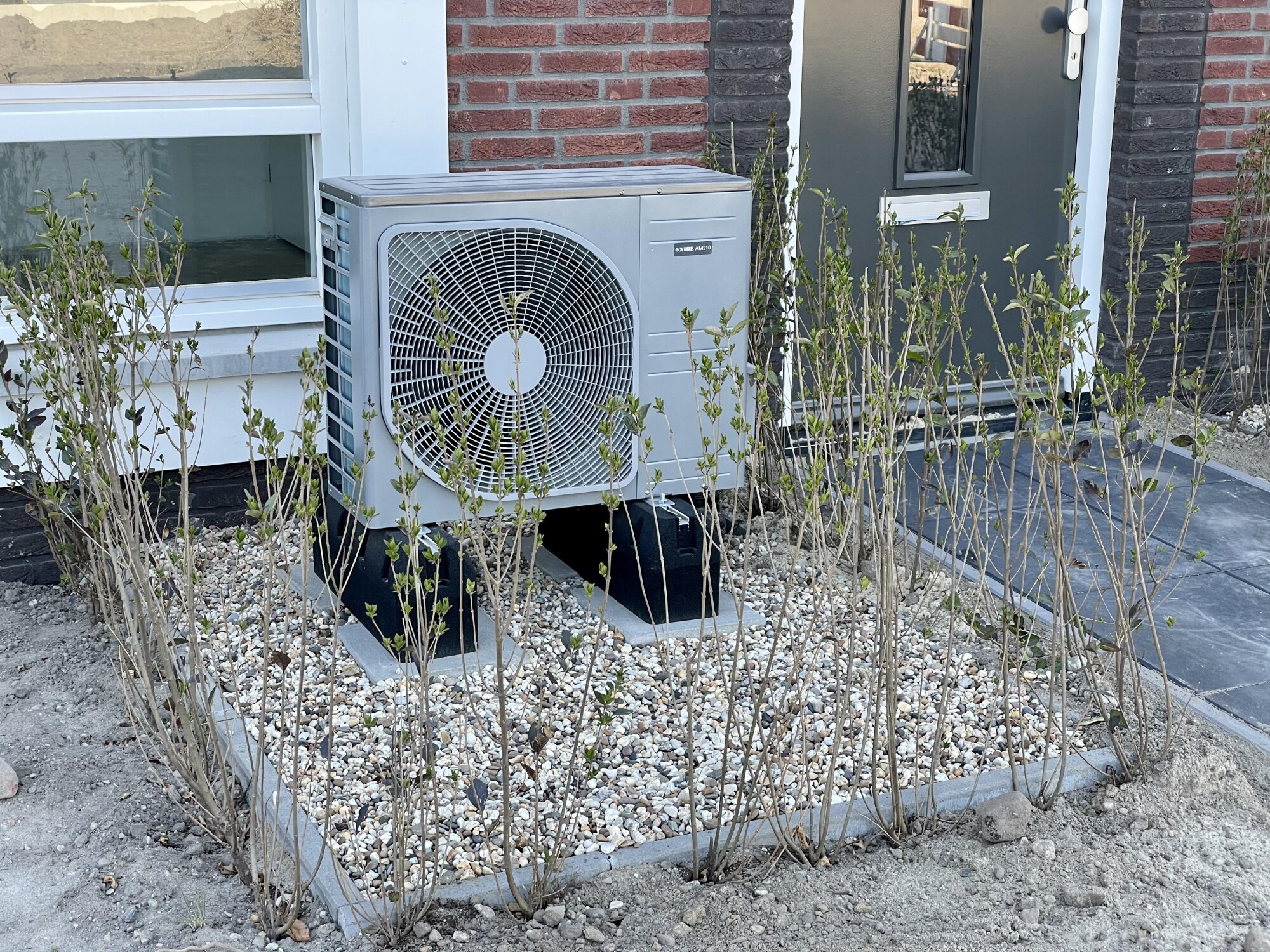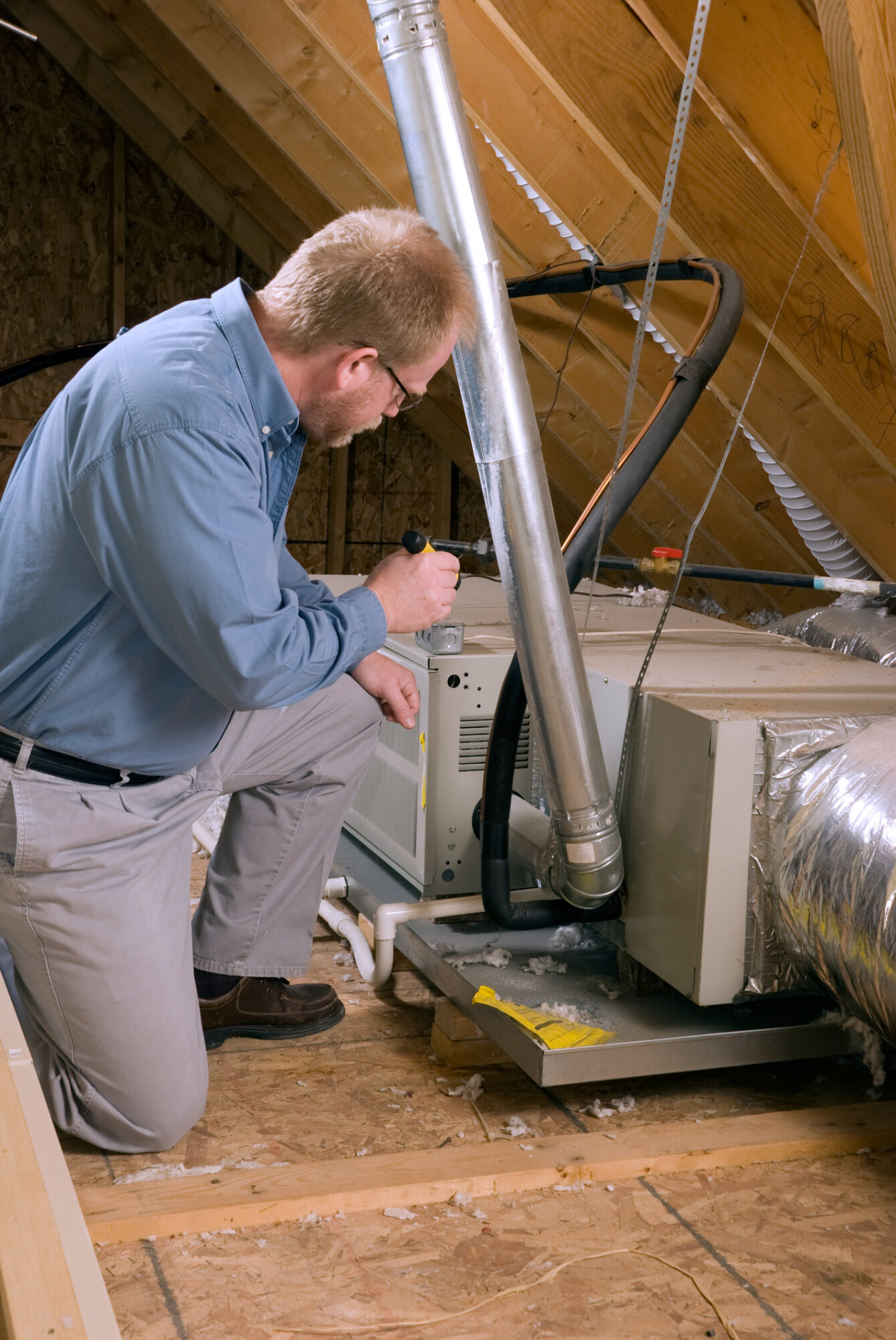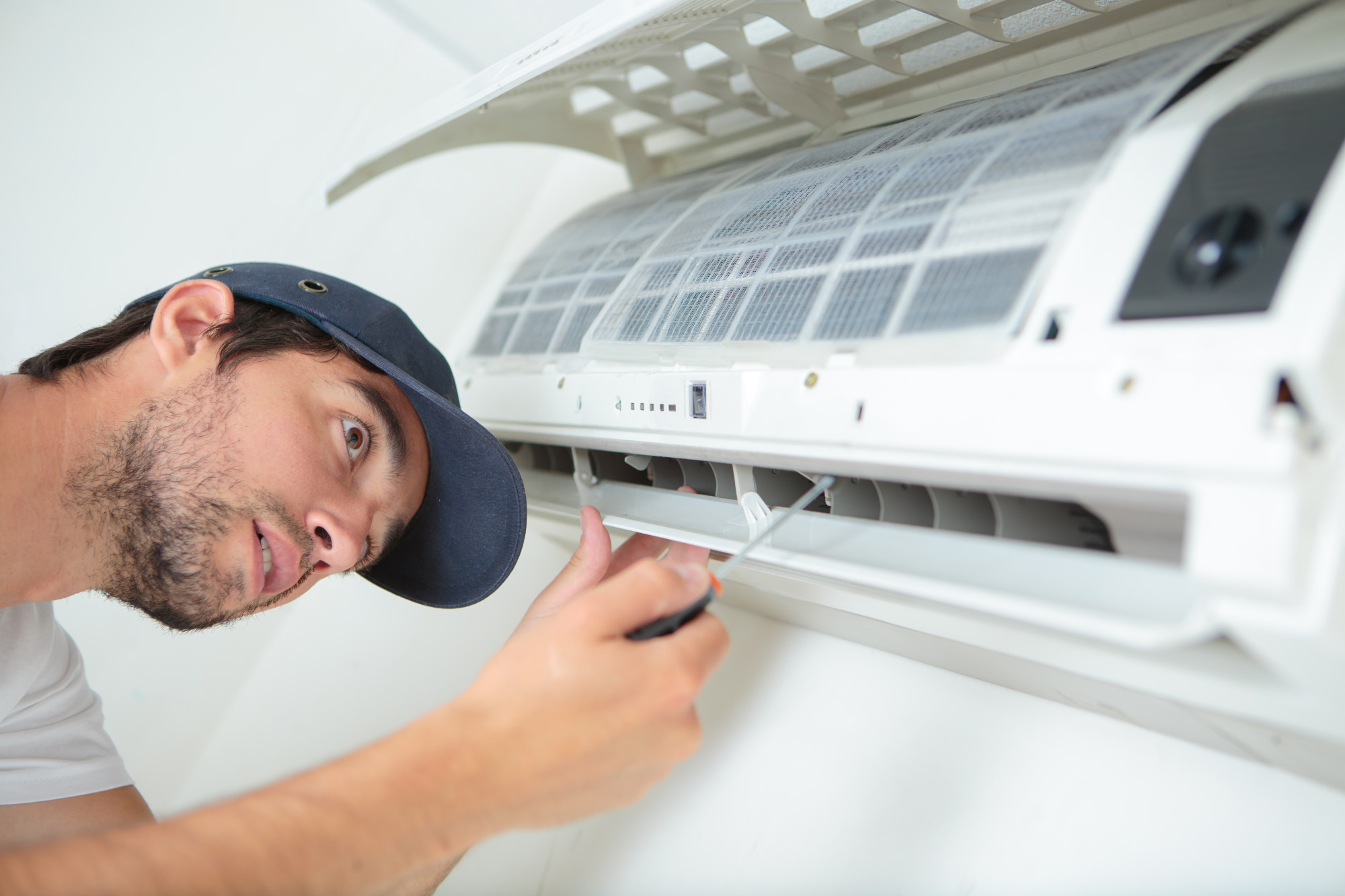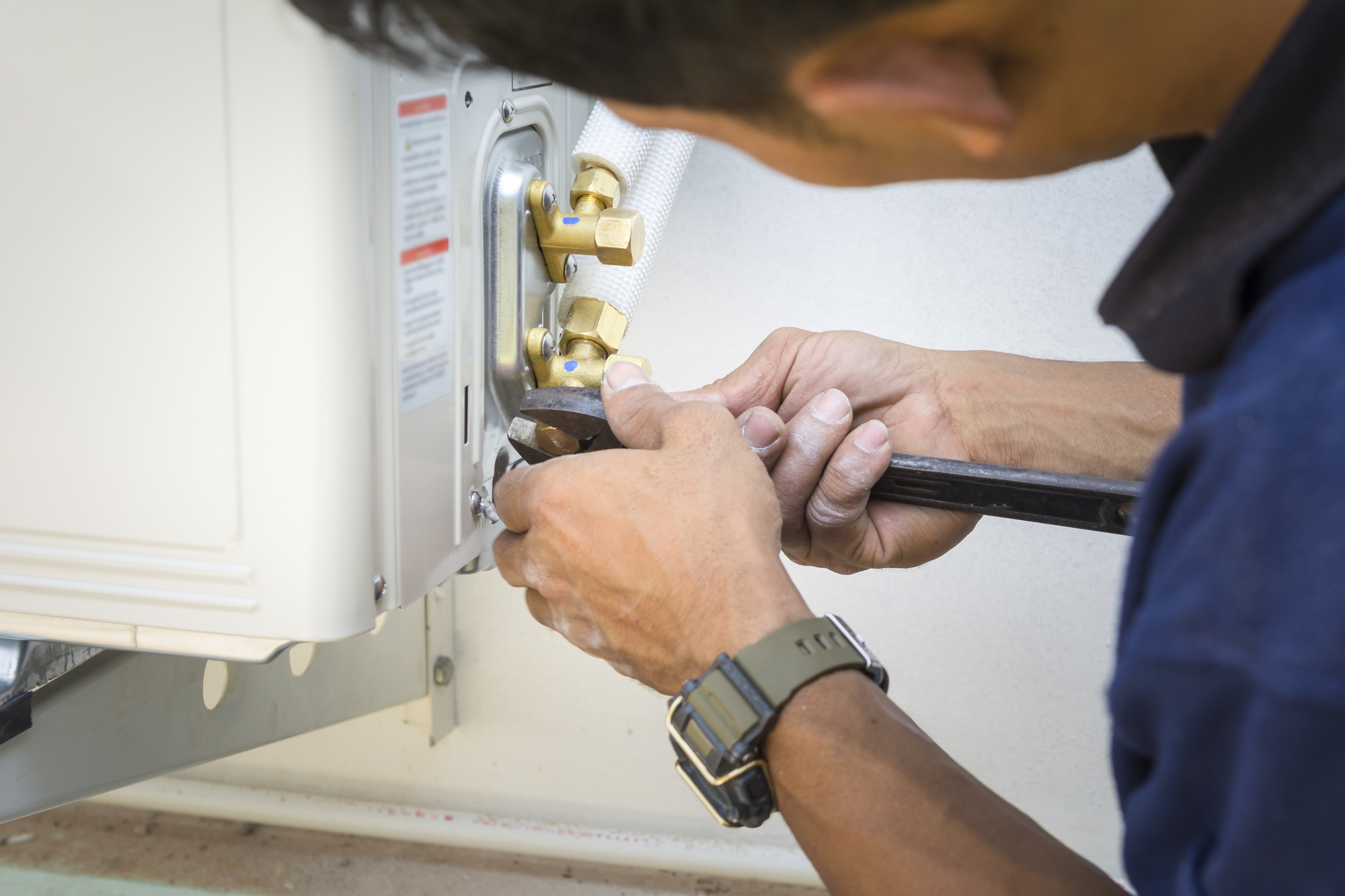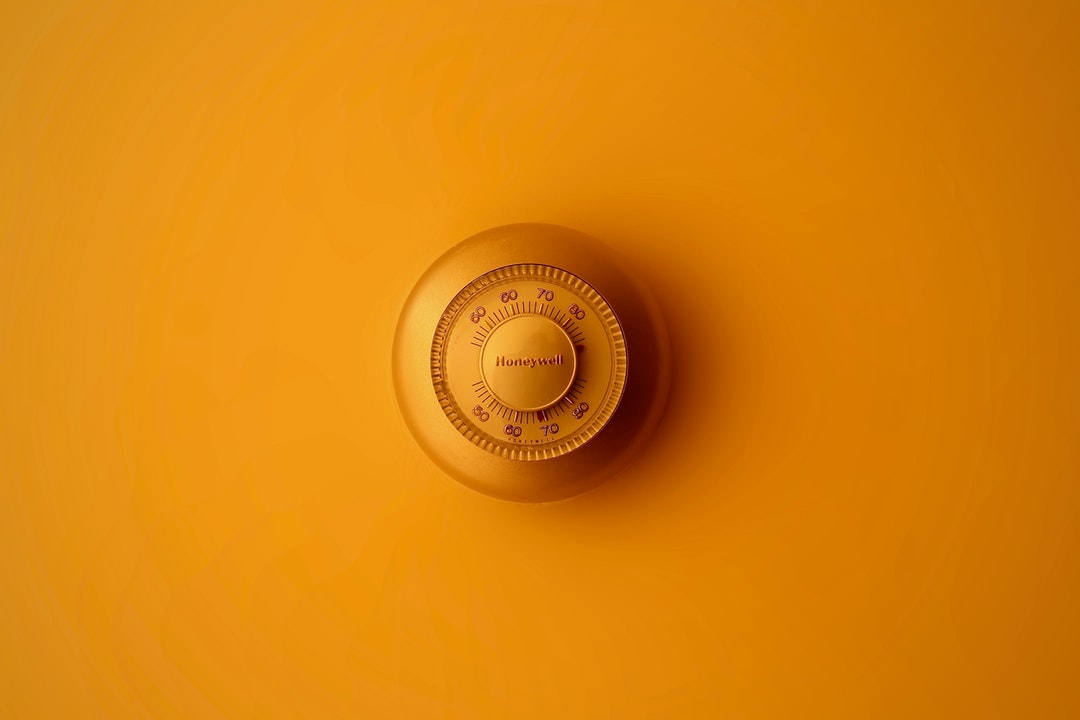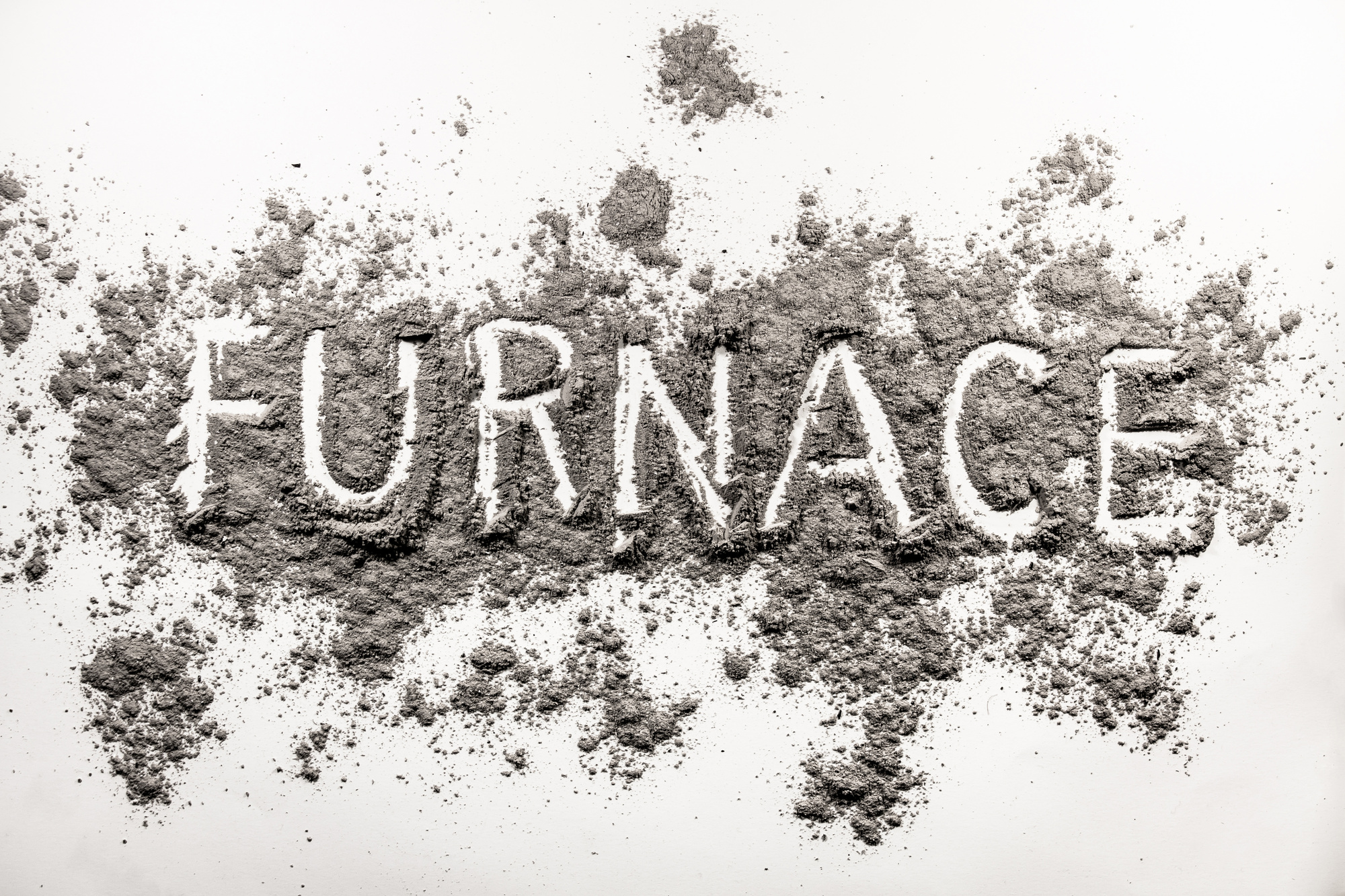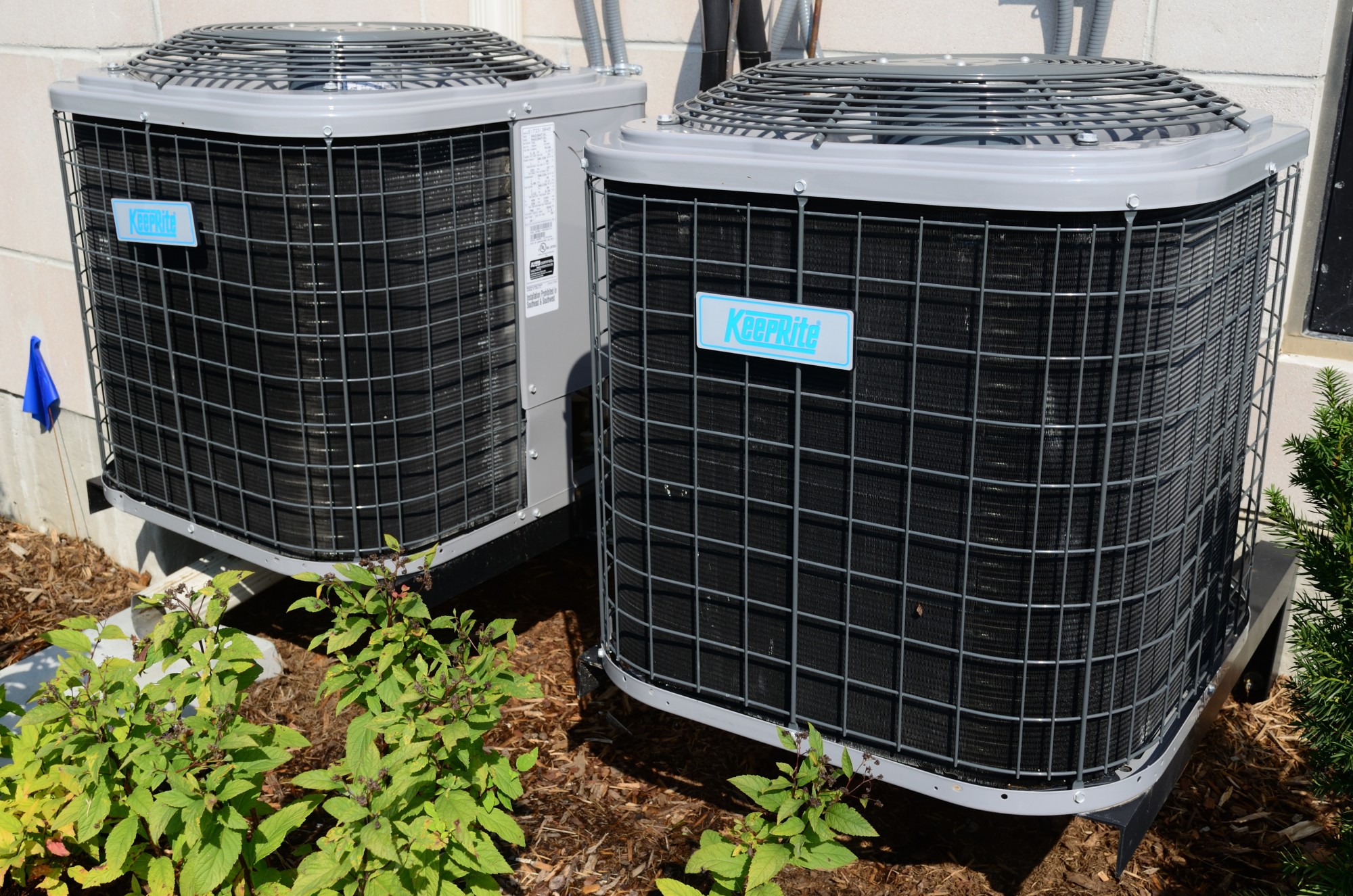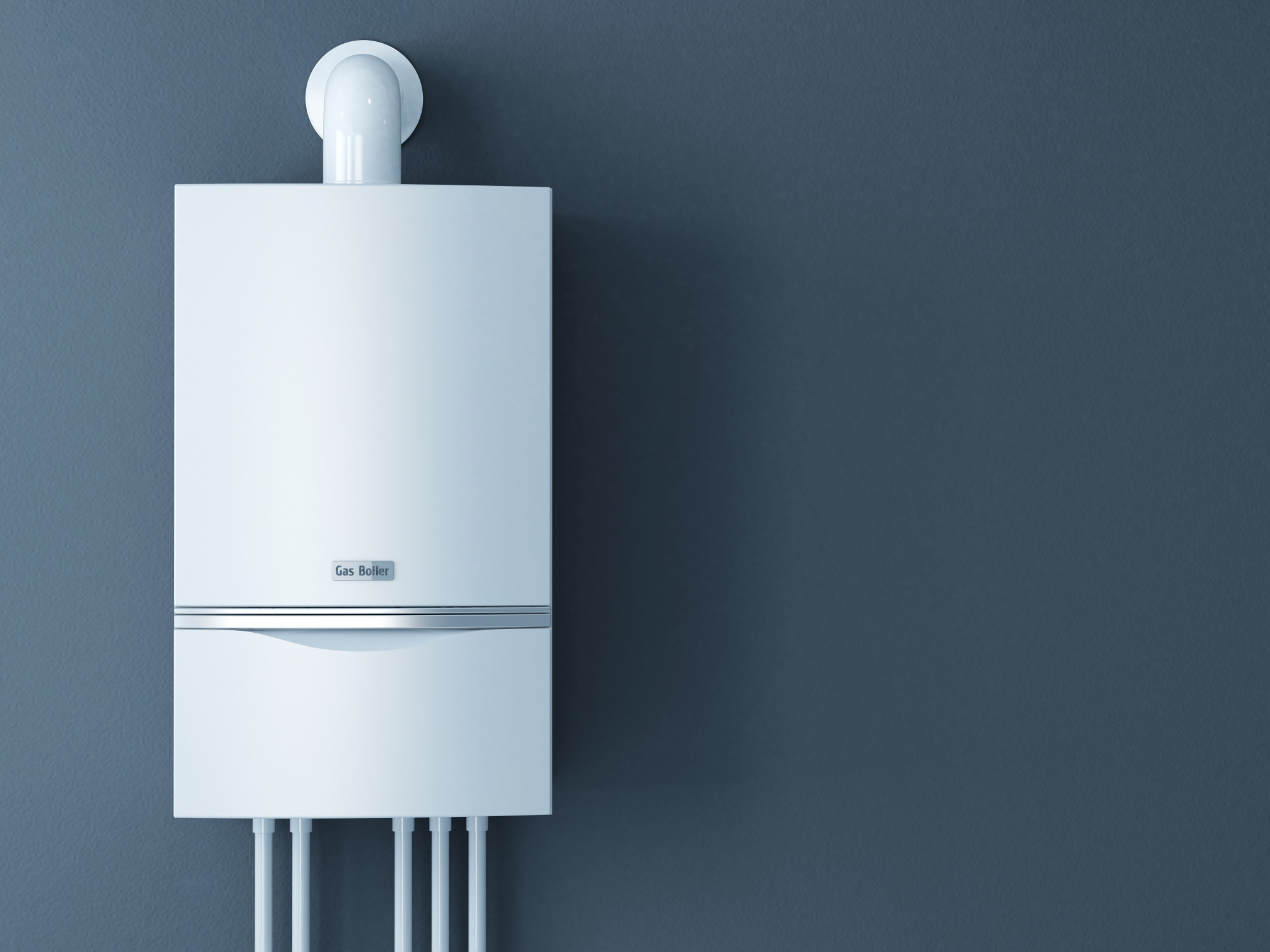Choosing the Right Heating System in Friendswood, TX: A Winter Replacement Guide
Winter here in Friendswood, TX, brings shorter days and reduced sunlight. It's a combination that can trigger the blues. So can a furnace that doesn't produce enough winter warmth.
Upgrading your heating system is one way to banish the blues. However, choosing the ideal system can feel overwhelming. This guide will help you find the best heating solution for your home.
So ditch the parka, get cozy, and explore your options for furnace replacement.
Signs You Need a New Heating System
The average furnace lasts 15-20 years, but with good heating and cooling maintenance, many furnaces last longer. If you're dealing with an aging furnace, it's time to consider upgrading.
The furnace usually offers clues that it's nearing the end of its lifespan. Signs include:
- Age and inefficiency
- Frequent furnace repair
- Uneven heating
- Increased energy bills
- Strange noises or smells
As your furnace ages, its efficiency declines, meaning you're spending more money on energy for less heat. You're likely investing more in repairs as well. Replacing an old furnace with a newer, higher-efficiency model can significantly reduce energy bills and keep your home comfortable.
Fueling the Fire: Choosing the Right Source for Your Heating System
The heart of any new heating system is its fuel source. Each choice below offers unique advantages and considerations.
Natural Gas
Abundant in Friendswood, natural gas delivers powerful heat. This fuel offers competitive prices, making it a budget-friendly option. Be aware that natural gas prices can fluctuate, impacting long-term energy costs.
Natural gas is also considered one of the cleanest fossil fuels you can use. Depending on your home's existing infrastructure, a new gas line installation might be necessary.
Electric
If your home is already wired for electricity, switching to an electric heating system can be a seamless transition.
Larger homes might need additional capacity upgrades to accommodate an electric heating system. While efficient in mild climates, electric systems might struggle to keep up in extreme cold, requiring backup heating sources.
Opting for an electric furnace aligns with sustainability goals, reducing your carbon footprint.
Propane
Propane offers a reliable heating solution for homes lacking access to natural gas. Propane heating systems deliver strong performance, ensuring comfortable temperatures throughout the winter.
Tank refills and regular maintenance are part of the equation when choosing propane. Propane prices can vary depending on location and delivery schedules, impacting your overall heating budget.
Choosing the right fuel source depends on your needs, budget, and home environment. A qualified HVAC professional can help you determine the best match.
Finding the Ideal Heating System
Once you've chosen your fuel source, the next step is finding the perfect heating system type to match your home's unique needs. Here's a closer look at your options:
Furnaces
Considered reliable workhorses, furnaces deliver consistent warmth through existing ductwork. They're efficient with gas or propane and ideal for homes with mild to moderate climates. While some homeowners prefer electric furnaces, their performance pales in comparison.
Heat Pumps
Heat pumps harness the air's natural warmth. They're an efficient and cost-effective heating solution in mild climates. Heat pumps can significantly reduce heating bills but require backup heating in extreme cold.
Again, consulting a qualified HVAC professional can help you learn more about your options and find the perfect solution for your specific comfort and energy-saving goals.
Choosing the Right Fit: Other Essential Considerations
Picking the fuel source and heating system type comes first, but there are a few other things to consider before you make the final decision. Consider these other key factors: your home's size and insulation, and Friendswood's typical winter temperatures.
Your home's square footage and insulation levels are crucial in determining the right heating system size. Poorly insulated or large homes need more power for proper heat distribution. Smaller, well-insulated spaces tend to stay warm enough with a smaller unit.
Selecting the right size furnace ensures your system operates efficiently and keeps your entire home at a comfortable temperature.
Don't forget about climate. Friendswood's typical winter temperatures and your specific heating needs should also guide your choice. If mild chills are your biggest worry, a heat pump might be sufficient. But for those bone-chilling nights, a furnace is the best option.
Next, we'll help you decode efficiency codes. It's a good idea to get familiar with how manufacturers rate heating systems for efficiency and performance.
Understanding Efficiency Codes for Heating Systems
When you're ready to choose a new heating system, deciphering efficiency ratings can feel like cracking a secret code. Here's a quick breakdown of the key terms you'll encounter:
AFUE (Annual Fuel Utilization Efficiency)
This rating applies to gas-fired systems like furnaces. It tells you what percentage of heat your furnace produces for every dollar of fuel it consumes. The higher numbers indicate greater efficiency.
Aim for an AFUE of 90% or above to get the most for your energy dollars.
HSPF (Heating Seasonal Performance Factor)
This rating is all about heat pumps. It measures how efficiently the system extracts heat from the air to warm your home throughout the heating season. Higher HSPF values mean you'll get more bang for your buck.
Look for an HSPF of 8 or above for optimal performance.
SEER (Seasonal Energy Efficiency Ratio)
While not directly related to heating, some systems also offer cooling capabilities. SEER tells you how efficiently the system cools your home. If you're looking for a year-round solution, consider models with high SEER ratings as well.
Higher efficiency ratings generally translate to lower energy bills and a more environmentally friendly heating (and cooling) experience.
Guarantee Your Winter Warmth With a New Heating System
Winter is coming to Friendswood. If your heating system didn't provide enough winter warmth last year, now is the time to upgrade.
When you search for heating and cooling near me, you'll find us, P & M Air Conditioning and Heating. Our family-owned business has helped keep Friendswood, Texas families warm since 1947. We offer heating replacement, heating and cooling maintenance, and indoor air quality solutions.
Reach out today with questions or to request a free furnace estimate.
Preventing Furnace Repair: How to Maintain Your Furnace Properly in Friendswood, TX
Reports show that 47% of households rely on natural gas heating in winter. While 36% of households rely on electricity to keep their home warm during these months. During winter, the last thing you want to deal with is a furnace repair. This can be very costly, and companies are often overbooked during this time.
Because it can be so difficult to get heating and cooling maintenance during winter, it is best to prevent this. You can do this by maintaining your furnace system year-round.
Keep reading to find out how to avoid furnace repair by doing these small things.
Schedule Maintenance
One of the most important things you can do is to schedule maintenance for your furnace. AC and heating tuneup options are always ideal rather than waiting until a repair is necessary.
Most repairs can easily be avoided by simply maintaining your furnace. If you maintain it, issues will be spotted long before they become severe and get out of hand.
In general, homeowners should schedule maintenance once a year. You can do this by looking up heating near me online to find local companies.
Regular maintenance is also a good idea as it helps to catch issues that do need to be repaired. The expert will be able to see any issues when they go to perform maintenance.
These issues can be quickly repaired so that they do not start to damage your furnace. This can be a huge money saver in the long run since repairs are much more expensive.
You should have a schedule every year where you have maintenance. This will help you to stay on track and make sure you get this done before winter hits and your furnace is in full use.
Change the Filter
Something that many people forget to do is to change their furnace filter. Changing the filter is going to be the number one way you can maintain it during winter.
Winter in Friendswood, Texas, can be busy for AC and heating companies. You want to take care of your furnace as much as you can so that it stays functional during this time.
Furnace repair will be necessary if you do not change your filter regularly. Most experts recommend homeowners change their furnace filter once every 2 to 3 months.
The filter is what catches all of the dust and debris that is circulating through your home. Not only does this help your furnace, it helps your indoor air quality.
If that filter remains unchanged, it will start to put a strain on your furnace. It will be harder for the furnace to push out warm air, which will lead to issues later on.
This is a very simple issue to avoid having if you have a schedule where you change the filter. It only takes a few minutes and only needs to be done a few times a year.
Use Moderate Heat
Some Texans make the mistake of cranking up their heating during winter. It can be hard to not do this, especially during colder winters that you may not be used to.
But if you crank up the heat in your home too much, this can be a bad thing. You will definitely need heating and cooling maintenance if you are abusing your furnace.
Especially during very cold days, turning up the heat isn’t always going to help. Turning your thermostat higher is just going to make your furnace work harder during very cold weather.
The temperature you have set may be unrealistic depending on the outside temperature. If this is the case, your furnace will be severely taxed, and it will never be able to reach that temperature.
It is important that you keep your furnace at a realistic temperature for your home. Your temperature manual should also give recommendations for how high you can set it safely.
If this is something you struggle with, you can also rely on other forms of heat. Space heaters can be a good way to warm up individual rooms that are drafty or colder.
Don't Ignore Changes
One very important tip to remember is to not ignore changes in your furnace. A furnace repair may be necessary if it starts to work differently than it usually does.
There are always going to be warning signs if your furnace is struggling. You must pay attention to this and act immediately instead of procrastinating.
Things you should watch for our strange noises, inaccurate heating, or strange smells. Any kind of little change could signify a bigger issue going on.
It is best to set up an AC and heating tune-up with a professional to see what is going on. The longer you wait, the likelier it is that the issue will continue to get worse and worse.
If you believe that the issue is severe, you should also stop using your furnace immediately. This may be a dangerous issue, and you do not want to continue leaving it to run.
How to Avoid Furnace Repair in Friendswood, TX
With it being winter in Friendswood, Texas, the last thing you want to do is have a furnace repair necessary. The good news is that you can avoid this by maintaining your furnace on your own.
There are small things that you can do to keep your furnace in tip-top condition year-round.
Do you want to schedule a free furnace estimate? Contact us today at P&M HVAC to schedule furnace maintenance in the Houston area.
How to Choose a Furnace Repair Service in Houston, TX
The HVAC was first invented in 1931. Ever since then, HVAC units have been an essential part of homes and other buildings. Without them, it would be impossible to regulate the interior air temperature of your home, especially when it comes to heating.
If your furnace has recently broken down, you'll need to call up a furnace repair service to help. But what should you look for when choosing a furnace repair service in Houston, TX?
Keep reading and learn more about what you should look for when choosing a service for AC repair near me.
Check the Online Customer Reviews
These days, almost every service has at least a handful of reviews from previous customers online. These customer reviews can tell you a lot about a particular service and they can save you a lot of time when choosing.
Instead of first ruminating over things like AC repair-free estimate options or issues with your air conditioner leaking/AC pan leaking, you should instead turn your attention to the reviews that various AC companies have.
If you find a repair company that has mostly negative reviews, this is a sign that the service isn't very high-quality. It also shows that the service doesn't care about making its customers happy. On the other hand, if you find a company for heating and cooling near me that has many positive reviews, you may be in luck.
The Details
Reading online reviews can tell you what's good or bad about a particular service. If the reviews complain that the service was late or did a bad job on the repairs, this is a clear sign that you should ditch that option and look elsewhere. On the other hand, if most of the reviews are enthusing over the service's punctuality and efficiency, then you may want to give that service a closer look.
When choosing a service for heating near me, you'll always want to do plenty of research. That way, when you hire a service for heating and cooling maintenance or an AC and heating tune-up, you'll know exactly what kind of quality you're getting. More importantly, you won't have to deal with the aftermath of a low-quality service.
Besides the quality of the service, these reviews can also give you more information about various features the service may have to offer such as a free furnace estimate or specialized services.
Furnace Repair Experience
Experience is very important when hiring a furnace repair service. But how much experience should such a service have? Ideally, when looking for furnace repair experience, you should make sure that a service has at least a few years of experience. The more years a repairman has, the better.
The last thing you want is to hire a brand-new repair service. A new repairman will have a certain amount of knowledge of the job, but they won't have the skills or experience necessary to tackle more complicated problems. On the other hand, a repair service with many years of experience will have already seen all sorts of furnace problems.
For that reason, the more experienced service shouldn't have any issues fixing most problems relating to your furnace. The amount of experience a repair service has often correlates with the quality of that service. For example, if you see that a service has been repairing furnaces for 20 years, that service is naturally going to be more trustworthy and sought-after compared to a service that just got started last year.
The Details
Besides that, services that have been around for a longer period of time have more reviews and references to offer. After all, over so many years, people are either going to have good things or bad things to say about that service. So, if a repair service has been doing a good job for many years and previous customers only have good things to say about it, then you might want to consider hiring that service for yourself.
This would save you a lot of time and money. Besides that, hiring an experienced service will pretty much guarantee that the job will be done in a speedy and professional manner. What else could you want from a furnace repair service?
The Price
Besides experience and skill, it is important to consider how much a furnace repair service is going to cost. If a service seems unusually cheap, you might want to stay away from that one. This is because unusually cheap services tend not to do a very good job and they may do more harm than good to your furnace.
Does this mean that you have to pay for an arm and a leg for a good repair service? Not at all. Comparing furnace repair costs is a good way to narrow down your price options and see what the average cost of a furnace repair might be.
You should also look for services that offer free estimates or quotes to help you out. Once you start comparing the costs of different furnace repair services, you shouldn't have any trouble weeding out those that are too expensive or too cheap. That way, you should be able to choose a reasonably-priced and high-quality service.
How to Choose a Furnace Repair Service
Choosing a furnace repair service doesn't have to be difficult, but there are certain things you should keep in mind. For example, you should always check customer reviews online and you should check how much experience a service has.
If you need a furnace repair service in Houston, Texas right now, contact us here.
A Step-by-Step Guide to the Furnace Installation Process
Did you know that the installation process is one of the most important steps in getting your new furnace up and running? According to the Department of Energy, a furnace that is not properly installed can waste up to 30% of energy bills.
That's why it's essential to make sure you hire a qualified HVAC technician to install your furnace.
This step-by-step guide will walk you through the entire furnace installation process. So, whether you are doing it yourself or hiring a professional, this guide will ensure your installation goes smoothly.
Venting
Before starting the furnace installation process, ensure enough venting to circulate carbon monoxide outside the house properly. Check with your fuel provider if there are any laws regulating vent piping. You may also need additional vents to accommodate humidifiers and other appliances installed later on.
Don't forget about insulation, since it helps stop the heat inside the room after warming up. Also, don't place too much weight on the wood-burning unit because it's not designed for that purpose.
Prepare Your Site
Start by ensuring the area surrounding it is clear of any obstacles or other appliances that can block airflow. Also, it will need to have access to both the electrical outlet and gas line. If your house doesn't have an outdoor vent, use supplementary ones instead.
Consider using a wall mount instead of a floor-standing model if space is at a premium. The area around the furnace should be clear of obstructions before setting it aside for assembly later.
Remove any combustible materials in the vicinity. Remember, these might ignite if they come into contact with exhaust gases expelled by the unit. A clearance of at least three feet on all sides should do.
Read the Manufacturer’s Instructions
Going through the manual is vital before beginning any installation procedures. It includes information on what happens during the furnace installation.
Here are some details included in a heater installation manual:
- Preparing for installation
- Making electrical or gas connections
- Positioning your new furnace and burner pipe assembly
- Checking flue pipe clearances for proper venting
- Testing the furnace electrical and gas systems
Follow these instructions carefully to ensure your new furnace operates properly and safely.
Position the Furnace Properly
Before you do anything else, ensure the furnace is standing on a solid surface. This way, it won't move while in operation. You'll also prevent any accidents from happening later on while trying to attach pipes and wires.
As long as it doesn't move, consider putting down some plywood underneath just in case. Where you put it will depend on your specific unit's design. Some furnaces are installed in the basement, while others have their designated area in an attic instead.
Before installing a new furnace, please consult with the manufacturer to confirm its location requirements. As such, you will not mistakenly place it somewhere where it won't work correctly or damage other appliances because of vibration.
Electrical Connection
Make electrical connections by following the manufacturer's instructions and local building codes. Before starting the installation process, shut off the power supply to the furnace. Use a voltmeter to make sure there are no current leakages.
Take appropriate steps if something goes wrong during testing! The next step is making electrical connections. You can do this by taking one wire out from the terminal located on the right side of the unit or using color-coded cables.
Don't overload your circuit breaker with too many appliances. Remember that dedicated circuits will be needed depending on the size of your furnace. After finishing these steps, you can start installing the furnace.
Gas Line Installation
You should make sure that the furnace has enough space to prevent clogging or corrosion in the future. This means you need to cut holes in the right places and use appropriate pipe fittings.
Everything should be connected tightly but not too tight because this may cause obstructions.
Starting from 100 to 200 feet, install a gas supply line that can supply up to 7 million BTU of energy per hour. Even if your unit is only rated for 4-5 million BTUs, it will still deliver enough power when needed. This is more important during colder days.
You must calculate your needs beforehand. This will avoid installing a fuel line that doesn't fit your furnace performance.
Consider using a flexible gas connection pipe between the meter and gas control valve. It allows you some freedom when running piping. If this type of pipe isn't in the hardware store, use the stainless steel gas line when making your connections.
Drain Down the Unit Properly
Once everything's set up correctly, drain down the furnace. Open up its air intake damper all the way and allow cool air from outside to enter until water starts trickling out of its drain line.
This should only take a little while since furnaces usually operate under relatively high pressure. It causes water molecules to move in and out of the cooling coils rather quickly.
Test Run It
After hooking up everything, switch on the power again. Wait for about 10 minutes and check whether it works by listening closely for any unusual noises.
If everything's okay, wait for the unit to accessorize itself using its inducer fan and start heating up. Once it does, check whether the furnace's power-on light comes on and stays lit at all times without flickering too much. If so, it means you've successfully installed a new furnace.
Maintenance Tips
Make sure you clean furnace filters once per month during cold months. This way, the unit will not run out of power due to clogged vents.
It is recommended that you change these filters every 30 days if necessary. Furnace maintenance is essential when operating a unit 24/7. If left without service, it can cause severe damage to its elements.
If you notice any signs of corrosion on vents or more extended warm-up periods, turn off your system immediately and contact professionals.
Need a New Furnace Installation or Repair?
Have your air conditioner started failing or feel that you need a new furnace installation and don't know where to find the right experts? Worry no more. At P&M Air Conditioning and Heating, we have all your heating installation and servicing needs.
Our technicians are NATE certified, and we provide 24-hour services across Houston, TX Bellaire, TX Pearland, TX Friendswood, and TX West University. For a free estimate or inquiries about our services, please give us a call now for an immediate response.
How Can I Improve the Heating System Efficiency in My Home?
In 2015, 55% of the energy used in homes in the United States was used for heating and cooling. When you have a heating system that is inefficient, it can increase your energy costs and make your home less energy efficient.
However, there are ways that you can combat rising heating costs by improving your heating system efficiency.
Do you want to learn more about how to create an energy-efficient home and lower energy bills? Keep reading this article for tips on improving your heating efficiency!
Change Air Filters
One of the easiest steps you can take to make your heater more efficient during the winter is to change air filters. Often, the filter in the furnace can get clogged with dirt, dust, and other debris. While this improves your indoor air quality, having a dirty filter will make it harder for your furnace to push air through the filter.
This means your furnace has to work harder and for longer to get your house warm and circulate the air.
By changing out dirty air filters, it will be easier for your furnace to work and it will consume much less energy. Typically, these filters should be changed every three to six months.
Buy a Programmable Thermostat
Something else that can make it easier to control the efficiency of your heating system is buying a programmable thermostat. Using a smart thermostat or one that runs on Wi-Fi makes it easy to turn the heat on or off, no matter where you are.
They are typically easy to install and make it easy to lower your energy bills. For example, programmable thermostats allow you to adjust the temperature of your home while you are out of town so you don't have to waste money heating up an empty house.
Programmable thermostats are also more accurate. This means that you can heat up your home to the exact temperature you want and save money on your monthly energy bills.
Lastly, you can create a heating schedule with a programmable thermostat. This way, you can lower the heat when no one is home during the day and automatically turn on the heater later at night when people return.
Distribute the Heat in Your Home
Often, the warm air from our heaters is not distributed throughout our entire home. Hot air can get trapped near your ceiling and is wasted. However, you can easily circulate this air by reversing the direction of ceiling fans in your home.
By simply flipping a small switch at the base of your fan, it will blow the hot air down to the bottom of your room, rather than pushing the warm air up.
Seal Air Ducts & Other Air Leaks
Heat loss in your home may be coming from holes or leaks in your air ducts. If there are parts of your ducts that are easily accessible, you can seal all of the joints of these ducts to keep them from wasting the hot air.
Most people use caulk or silicone to cover these leaks. However, you can also hire a professional company to identify leaks in your air ducts and seal them.
There are also other areas of your home that may be leaking warm air or letting cold air inside. Common sources of air leaks include areas around windows and doors, near your foundation, and other places where pipes or wires come into your home from outside.
Sealing these leaks and insulating the rest of your home is an easy way to make your heater work more efficiently. This is because it prevents the warm air from escaping outside and allows the air to heat your home faster.
Open Each Air Vent
Some homeowners close air vents in their homes or cover them with furniture if they do not need to use them. For example, they may shut the vent registers in parts of their home that they do not use.
However, closing the air vents can create pressure in your air ducts. While you may be able to redirect the heat to another part of your home, it is not an efficient method of directing heat. This makes your heater less efficient.
Instead, you should open each of your air vent registers and avoid covering them with furniture.
Get a Professional Service
Finally, you need to get your heating system serviced by a professional HVAC technician. This should be done every year, as it can prevent problems from developing with your heating system.
Your HVAC technician will be able to identify potential problems with your heater and can help you make simple changes to make your heating system run more efficiently. If your furnace is getting old, your HVAC technician can even recommend a new, energy-efficient heater to replace your old unit.
By hiring a professional HVAC technician before the winter months, you can make sure your heater is prepared to run smoothly and more efficiently throughout the heating season.
Get Help Improving Your Heating System Efficiency Today
To keep your energy bills from skyrocketing during the cold winter months, there are a few tips that you can follow to improve your heating system efficiency.
Do you want to learn more about installing an energy-efficient heater or getting your heater serviced to improve its efficiency? P&M HVAC can help! We offer heater replacement, repair, and other maintenance services to improve your heating efficiency.
Contact our team today to learn more about our heating services in the Houston, Bellaire, Pearland, West University, and Friendswood, TX areas!
Before It's Too Late! The Top Warning Signs You Need Heating Replacement
Do you actually know how old your heating system is? If you are finding your property takes longer to warm, or have noticed an increase in utility costs then it is a sign that you may need a replacement. If you fail to act, a faulty heating system can cost you financially and even worse, can cost your health.
If you are unsure if your home needs a heating replacement, or you suspect it may, then have no fear. Read on to find our warning signs that indicate you need a heating replacement immediately.
1. Your Bill Has Increased
The cost of utilities does rise over time, and it is natural to see your bills go up a little year on year. However, sudden and dramatic increases could be down to an inefficient system or parts. If you already know your air ducts are properly sealed and you have been conducting regular maintenance, then you definitely should not have sudden increases.
If your heating bill increases over a period of a few years, but that increase is not inline with rising energy prices, your furnace is probably to blame. Furnaces become less efficient over time. This means they need more power, using up more energy which translates to cost.
If the furnace is also leaking out heat in areas that are not required, then you will also be incurring extra costs due to increased fuel use. The internal parts may also wear out, causing gas and electricity bills to go up. In this instance, it is best to seek a quote from a professional.
2. The Furnace Is Old
Unless you have lived in a property for a long time, you probably do not know the age of your furnace. Like anything in your home, furnaces do not last forever and will need replacing after a while. The average life expectancy of a furnace is 18 years.
If you know or suspect your furnace is over 15 years old, then it probably needs replacing. You can check this by looking at the label under the unit (if it has one).
Replacements should be conducted not just because your furnace will fail or break, but because modern furnaces are much more energy-efficient. In fact, your furnace may keep running for a while longer, but the cost to you in utilities will become more than if you had replaced the unit. Try to locate a new furnace that has energy star ratings for maximum efficiency.
3. Odd Noises
One way you can tell that your furnace is reaching the end of its life is by the strange noises it will begin to make. Squealing, rattling, banging, and popping may all start to emanate from your unit. Another sign is that the blower may turn on and off frequently, or starts to blow cold air.
The noise you will hear will denote the problem, though they are too vast to list. The most common problems tend to be faulty motors or loose parts. Avoid them by scheduling regular maintenance or calling a repair specialist immediately.
4. Heating Replacement and Illness
A more serious sign of the need for heating replacement is an illness in the occupants of the property. You do not want your family or colleagues to get sick, and problems caused by aged heating can often be quite serious.
Carbon monoxide poisoning is a very serious problem that can result in death. It is characterized by flu and cold-like symptoms in the early stages.
Usually, it is caused by a leak in the gas heater or poor ventilation from the exhaust section. If the exhaust is not venting out of the living space properly or is not controlled, then the gas can build up. Gas can also leak from the heater exchange or other parts of the system.
You can keep yourself safe with a carbon monoxide detector. It is the only way to notice the gas before it is too late, as it is color and odorless.
5. Pilot Light Flame
A gas heater should always have a bright blue flame. A flame that is yellow or flickering is not a good sign and can be an indication that carbon monoxide is being created by your furnace and not venting away safely. The dirty and blocked system needs to be replaced or cleaned to prevent this.
If you find that the flame is weak or flickering without color changes, then gas is not being completely burned. Consult a specialist as it is a health risk.
6. Dry Atmosphere
Stuffiness and staleness in the house is an indicator that you may need your heating replacing. Aged furnaces do not have the ability to add moisture and clean the air in your property. You can see this if you have increased dust accumulation, static electricity build-ups, and furniture that dries and cracks.
Signs can also physically appear in occupants of the property. Dry noses, throats, or skin can be irritable signs. If anyone in the home suffers from any allergies they may also find that they increase in dry conditions.
7. The Thermostat Is Not Responding
If you find you are adjusting the thermostat often, or rooms are far too hot or cold, it could be a furnace problem. The furnace is no longer able to distribute the heat throughout your house. It could also be that the thermostat itself needs replacing or is due to have an upgrade.
Do Not Delay a Replacement
While your heating may still work under these circumstances, you can not delay a heating replacement or service. Financial costs aside, it could cost you and others your health.
P&M can provide services and maintenance for all your heating and AC needs. We have experienced, professional staff on hand willing to provide dedicated customer service. Call us today for a quote if you have any worries or queries about your heating replacement.
7 Warning Signs That Your HVAC System Is Failing
Summer will be here before you know it, and, in Texas, the heat is no joke! With average summer highs running between 86 and 98 degrees, we really rely on our HVAC system to keep us cool. If your system fails, you'll be uncomfortable at best and could face health risks in the worst-case scenario.
This is one of the many reasons why Houston heating maintenance is so important. Keeping up with your HVAC system’s needs and knowing the warning signs that your system is failing will help you avoid finding yourself sweltering in the summer. Here are seven of the most concerning issues you need to watch out for.
1. Indoor Humidity
Part of the way your HVAC system keeps your home comfortable is by removing humidity from the air. This is collected by the system and expelled as water.
Whether it’s the middle of summer or early winter, if your home feels sticky or stuffy, then this is a good sign that you need to have your system looked at.
2. Strange Smells
A strange smell, particularly if it’s lingering, is a sign that you could have an issue with your HVAC system. This could take the form of a burning smell or it may smell moldy, musty, or rotten. If you can track this smell back to your AC vents or your outdoor compressor then it’s definitely something you’ll want to take care of right away.
There are an array of possible causes, so it's a good idea to call in a pro to check it out. It’s also important to be careful of any chemical smells coming from your system. This could indicate that you have a leak that may be toxic.
3. Inaccurate Thermostat
If the temperature on your thermostat clearly doesn’t match the actual temperature in the home, you’ll want to start by troubleshooting the thermostat itself. Some of the newer smart thermostats are complicated, and there’s a chance you just don’t have it programmed right.
Start by turning the thermostat all the way down and see if the HVAC unit comes on. If not, then you likely have a problem with the system rather than with the thermostat.
4. Strange Noises
If you hear strange noises coming from your HVAC unit, you could have a problem with the belt, a loose part, or other issues. Some of the sounds you’ll need to look out for include hissing, rattling, grinding, squealing, or clunking.
Generally, these issues should be handled by a professional tech as tying to handle these types of problems yourself could create a danger.
Scheduling heating maintenance services right away can help you catch a small problem before it turns into a major issue, so don’t make the mistake of ignoring any unusual sound.
5. Inconsistent Temperatures
Unless you have a multi-zone HVAC system, the temperature in your home should be consistent from room to room. If you find that one room is very warm while another is freezing, then you likely have a serious problem with your HVAC system.
If you have a multi-story home or commercial building, you may also notice that there’s a temperature variation between floors.
Likewise, if the airflow has slowed down for no obvious reason, this is an indication of a problem. Your HVAC system is designed for uniform flow at all times.
6. Drastic Increases in Your Power Bill
Has your power bill suddenly skyrocketed? While there are many possible issues causing this, you’ll want to check your HVAC system. This is especially true if you’ve noticed any of the other warning signs as well.
If the higher energy use is tracked back to your HVAC system, that means that your unit is working overtime to keep up. Not only is this wasting energy, but it’s also stressing your system. This extra wear and tear could cause your system to fail prematurely, which is an expensive problem that a maintenance call could help you avoid.
7. Power Fluctuations
Does your HVAC system turn on and off randomly throughout the day? This is also known as “short-cycling” and is potentially a dangerous situation.
One possible issue is that the machine isn’t getting enough power supply to keep running as it should. Left unrepaired, this could damage your breakers or even your entire home’s power supply.
Another possible issue is that your system is overheating. Once it cools down, the power supply will go back to normal. This will continue to happen in cycles, and, eventually, it could create a major fire hazard. For this reason, short cycling is an issue that you should never ignore.
Ignore HVAC Problems at Your Own Risk
The first step to troubleshooting HVAC problems is knowing what to look for. If you’ve noticed any of these red flags, you’ll want to check it out right away. In almost all cases, a small problem that’s been left untreated will turn into a much larger issue.
If you’re not confident with your ability to do a DIY repair, call in a professional to take a look. In this case, it’s better to be safe than sorry.
Schedule Your Houston Heating Maintenance Today!
If you’ve noticed any of these warning signs, it’s time to schedule your Houston heating maintenance appointment now. Make sure you can keep your cool all summer long! Contact us today to schedule your appointment.
Houston Heating and Furnace Maintenance: 7 Tips to Get Ready for the Winter
With the chill wind picking up in the air, it is that time of year to get yourself settled in for the winter months. Between holiday prep, make sure you squeeze in time for furnace maintenance.
Making sure your furnace is well kept can do more than keep you warm in the winter months. It can also solve a lot of health and safety issues.
Need a bit help getting your furnace up and ready? Unsure of where to start or what to look out for? We have you covered!
Getting Ready for Winter with Proper Furnace Maintenance
Your furnace is an important aspect of your home. While it may only be on for a few months out of the year, if it is not ready for those few months, they can be disastrous!
In Houston, it is warm more often than not. As such, many forget the furnace even exists.
Such neglect means the machine will have a thick coat of hazardous dust and worn out pieces. With proper maintenance before winter is upon you, you can handle those problems before they grow into real issues.
A quick safety tip! Whenever you are working on your furnace, be mindful of whether it has any sort of fuel to it. Remove the gas, unplug the power cord, or shut down any connectors.
Remove any possibility that it can turn on while you are working on it. You may save yourself some painful backlash.
Now, let's go over the 7 easy steps towards proper furnace maintenance.
1. Start Early
You never want to double-check you have all your supplies at the very moment you need them. The same works for your furnace.
Even worse, in certain furnaces, a cold night can make your furnace hard to light, as heat can be harder to produce for that initial light.
The best course of action is to start before you need it. That means you should aim to start your furnace maintenance checklist a month or two in advance, around August or September.
If you are too late into the season, no worries! Later is better than never, especially when a cold front is breathing down your neck. As well, keeping up even earlier has its perks too.
If you do maintenance twice a year, right as winter is winding down and again when it starts to build up, then each check will be easier from less buildup and wear.
2. Visual Inspections Save Time
Sometimes the naked eye can catch a few items. It is always good to give your furnace a solid visual inspection. This can show you what pieces are dirty and what items look corroded or broken, among other things.
In gas furnaces, make sure that the venting pipes remain attached in the most secure way possible. For other types of furnaces, check for any clogs in drainage systems and such.
These quick checks can help you prepare for where your attention is needed most.
3. Check Filters
Filters are the biggest and most important piece you will need to check during furnace maintenance. The most common issues with a furnace or any air quality unit are the filters.
A dirty or damaged filter can do a lot of things. It can restrict airflow, which will force your motor to work harder to get the warm air out. They can also contain piles of dust and grime which will fly into the air for you to breathe!
4. Clean and Clear Out
The next is to check all the ducts and tubes. You must clear out any ventilation systems of all dirt and grime. That is the last line for air systems and like the filters, dirty vents mean dirty air!
For natural gas and propane, some water will be in the system. The excess leaks out into a drip pan. You need to make sure you remove this water. If this pan overflows, your entire system will shut down!
5. Sealing Leaks
Any cracks or breaks in the tubing or vents will need filling and repair. Air getting out will cause damage to the system and raise your energy bills. Gas leaking from a broken pipe is even worse.
You can seal most cracks or leaks in piping with some molding putty, but be very careful about how the putty may react to heat. When in doubt, leave this to the professionals.
6. Checking Safety Procedures
A modern furnace has a few odds and ends to make sure it operates in a safe and efficient manner. Check up on all these items to make sure they still function.
The thermostat is the main one. Most people have a combined AC and furnace system, so you will notice if the thermostat has gone weird during the summer months.
For gas furnaces, a flame sensor is a vital piece to keep your furnace running. Detach this from the furnace and give it an absolute clean. Your furnace should not even turn on without this sensor in proper order.
7. Get the Proper Professional Finish
Furnace maintenance can be a major job. For a large house or an old furnace, cleaning your furnace can be a lot of work. As well, when things get damaged or in rough wear, you might need more experienced eyes.
If you are ever in doubt about whether you are getting your furnace the maintenance it needs, call a professional. Most services are quick, efficient, and if you catch them before the busy season hits, even affordable.
For the greatest of qualities, trust the locals for your furnace repair!
Safe and Warm for the Winter
With the checklist checked and the steps followed, your furnace will have everything ready to keep you cozy. Furnace maintenance is one of those items on every year's list that needs crossing off, for your home and your family.
When you are as eager to keep your home as prepped and happy as you are for the holidays, we at P & M Air Conditioning and Heating are here to help! Contact us today for more information!
7 Affordable Ways to Come Home to a Warm House This Fall and Winter
Winter is approaching and you must be thinking of how to not only keep your house warm but do so in an affordable way. Homeowners are regularly advised to overhaul their inefficient heating systems, install double glazing, and use thorough insulation, but these are expensive tactics.
You need cheaper and quicker ways to keep your house warm. With summer coming to an end, fall and winter’s cold is just around the corner. Leverage these 7 tips to ensure that you can come home to a warm house.
1. Stop Heat Loss up the Chimney
Make good use of your fireplace during winter. There’s a possibility that you could be wasting a lot of heat energy from your fireplace via the chimney. This can be very costly because so much firewood would go into waste as you struggle to keep your house warm.
To prevent this heat loss, consider using a chimney balloon, which is used to block the opening of a chimney to save energy by stopping chimney drafts. It is made of a durable, reactive laminate and is very affordable.
All you need to do is to place it inside the chimney then inflate it until it fills the chimney opening; this helps in stopping any escaping heat or incoming cold air.
2. Upgrade Your Boiler
If you’re using an old boiler in the house - more than 10 years old - then it is high time you replaced it with a modern model. The new A-rated boilers are very efficient because they use smaller amounts of fuel or gas to produce larger amounts of heat energy.
3. Let the Sunlight in During the Day
Sunlight is a natural source of heat that doesn’t cost anything. You can make good use of it by ensuring that during the day, you capture as much heat from the sun as possible. To do this, open up all your curtains in the morning to let sunlight in.
You only need to open the curtains that can block sunlight from your house and leave those that don’t block any sunlight. Once the sun goes down, close all the curtains to keep the heat from escaping through the doors or windows.
If you are in a region that gets extremely cold during winter, you can consider purchasing insulated curtains to help keep the house warm. You can even put some temporary curtains, rugs, or sheets over the doors and windows to the outside at night while you’re sleeping.
These will offer some insulation and keep your house warm.
4. Mitigate the Stack Effect
Stack effect is a principle in physics which explains the movement of air in and out of buildings. As the air in the house gets warm, it will rise and this will create some negative pressure in the lower levels of the house.
The low pressure will by the laws of nature cause the cold air from outside to move into the house through any available openings. Stack effect is worse in the tall buildings because as more warm air rises, more cold air will be pulled in.
To mitigate this and have a warm house, you need to seal all the gaps that can allow cold air into the house, especially those at the lower levels. Check the bottom of your doors for any gaps and seal them using some rags or door snakes.
You can also check for any gaps in windows. To test for these gaps, hold a lit candle close to the places you suspect and observe how the flame behaves. A flickering flame is an indication that there’s some air leakage.
Do not ignore even small gaps; the cold air that comes in through such gaps throughout the night can cause lots of discomforts.
5. To Get a Warm House, Use the Oven More
Broiling, convecting, and baking things is the best way to keep your house warmer, particularly the rooms closest to the kitchen. It might be true that you don’t use your oven much during the summer because it makes the house hotter, so during winter take advantage of the oven to supply heat into the house.
Don’t be afraid to bake tons of cake and roast chicken when temperatures dip.
6. Move Furniture Away from Vents
Check all your furniture to see if there’s any that you placed in front of heating vents. If so, move the furniture away from the vent, at least for winter. You can return them to their position during the summer.
If some heating vents are blocked, some rooms will not get their maximum heat potential.
7. Install a Programmable Thermostat
Installing a programmable thermostat will ensure that your house is only heated when necessary. Installing one will ensure that your energy consumption is efficient and your monthly bills are low.
Furthermore, a programmable thermostat will save you a lot of time. You’ll not have to manually turn it off every time you are leaving the house and switch it on or adjust it every time you are in the house - the automated thermostat will do the job for you.
A programmable thermostat allows you to set the temperatures exactly the way you want them to be and for a time duration of your choice. You can even program it for a whole week.
If you can get a smart thermostat, even better. This device can detect the ambient temperature and respond accordingly. It can also detect when you leave the house and when you get back in.
A Warm House Is Good for You and Your Family
A warm house is beneficial to the well-being and health of your family. Cold houses are linked to poor health, particularly in young children. Keeping your house warm will not only make it cozy and homey but also beneficial to your health.
It is cheaper to keep the house warm than to spend on medical bills. If you are in need of professionals to install, maintain or repair air conditioning and heating services, be sure to check out our page.

